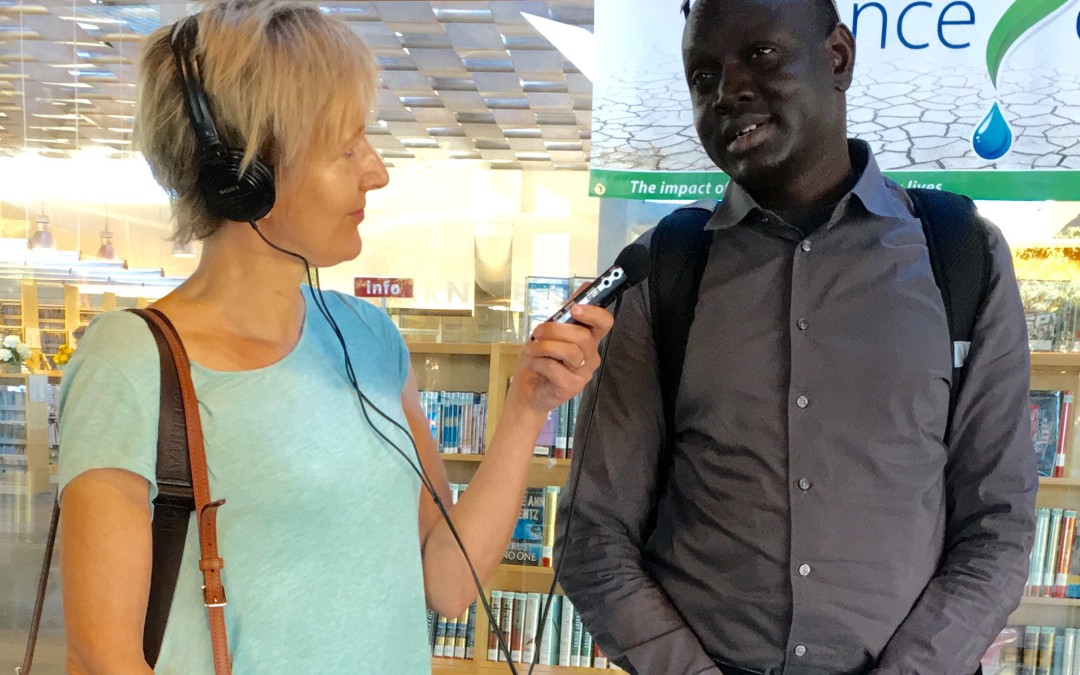
Feb 12, 2016 | BBC World Service, Entrepreneurship
By Alison van Diggelen, host of Fresh Dialogues
Immigration – it’s a hot button issue in this year’s U.S. presidential race. I was delighted when my senior editor at the BBC gave me this fascinating assignment: find some African immigrants in Silicon Valley, explore the cultural chasm they’ve crossed and how they keep close ties – both economic and emotional – to their homelands. What do friends back home think of life here in the United States? Cameroonian, Marie-Ange Eyoum described it thus:
“They look at the U.S. as heaven, they believe they’ll have more opportunity, be much more successful…” Marie-Ange Eyoum
But of course, it’s not all fun and games. Gabriel Tor (who was one of the Lost Boys of Sudan) works two jobs to help support eleven family members back home. He reckons he’ll have to work through retirement to pay off his $20,000 college loan.
This week, I joined the BBC’s Roger Hearing on the World Service’s Business Matters program. Here’s a transcript of our dialogue and my report (edited for length and clarity):
Listen to the BBC podcast here (Feb 10, 2016 Podcast titled “Twitter Disappoints” – Report starts at 26:00)
Roger Hearing: Now Alison, where you are in Silicon Valley…we’ve been asking you to take a look at something quite specific – to do with the ways people from the developing world, specifically Africa, manage to find their way to work there. Now, just introduce your report for us, if you would.
Alison van Diggelen: Immigration is a very topical issue this election year in America. I focused on three Africans who’ve come here in the last 10-20 years – one from South Sudan, one from Cameroon and one from Nigeria. I wanted to explore:
How are they contributing to Silicon Valley?
How do they give back to their families in Africa?
And how do those friends and family view their lives over here?
Here’s the report: Africans in Silicon Valley
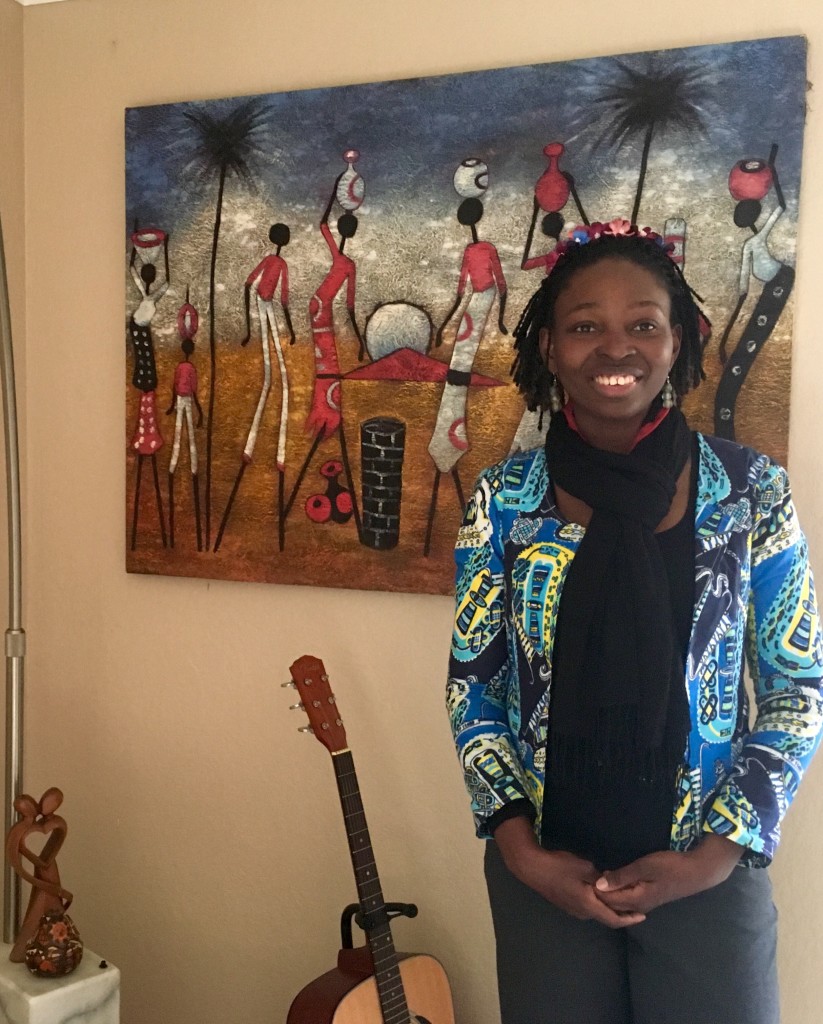
.
Africans may not be plentiful in Silicon Valley but some are making profound impacts back in their homeland. Meet Gabriel Tor. He’s one of several dozen Lost Boys of Sudan who arrived here as a refugees in the early 2000’s.
Gabriel Tor: How we live as South Sudanese…we have seen it all: how to live with something or how to live with nothing…
Tor works as a security guard and taxi driver. He has over 20,000 dollars in student debt, after completing a bachelor’s degree at San Jose State. Yet he still manages to send home about $3,000 each year to support his mother and 10 family members, exiled in Kenya (from the conflict in South Sudan.)
I ask him how long it will take to pay off his loan?
Gabriel: I think it’s going to take me up to the retirement age…I don’t have the courage to calculate the years…(laughter). I know it’s going to be a long time…it’s going to take decades to pay it off.
So what keeps him going? His brow furrows as he describes his first visit back to see his family – yet another generation forced to escape the violence that’s returned to South Sudan.
Gabriel: When I first visited, almost everybody was starving. It broke my heart.
Alison: Did you explain your tears to them?
Gabriel: To them, I had to hold my tears (back)… On the bus with other strangers, I broke into tears. It’s a situation that’s been made poorer by civil war.
Marie-Ange Eyoum also feels that tug to her homeland, in Cameroon.
Marie-Ange: I can be driving somewhere and I see the waste…how much food is being wasted, and my heart just goes back home.
Eyoum is ecstatic that she “won the lottery” – the diversity visa lottery that is – while completing her PhD in engineering (at Berkeley). Eyoum now works as a product manager for a tech company.
She goes back to Cameroon regularly to give leadership talks at universities and visit her high school, where she picks “the smartest ones” she says “mostly girls” to fund their education. So what do her friends in Cameroon think of SV?
Marie-Ange: The young people: They look at the US as heaven, they believe they’ll have more opportunity, be much more successful than in Cameroon.
Eyoum once tried to create a Leadership training startup in Cameroon but it floundered.
Marie-Ange: In Cameroon, yes doesn’t usually mean yes. No doesn’t mean no…So you kind of have to read under the line what is really happening…
Would she ever return to Cameroon? For now she feels she can make a greater difference being in Silicon Valley.
Marie-Ange: Definitely you need to be on the ground to do biz in Africa. It’s difficult being in SV. We are two oceans away, 9 hours time difference, two time zones.
I dearly love Cameroon and I would love to put in place something that would make a difference for future generations…
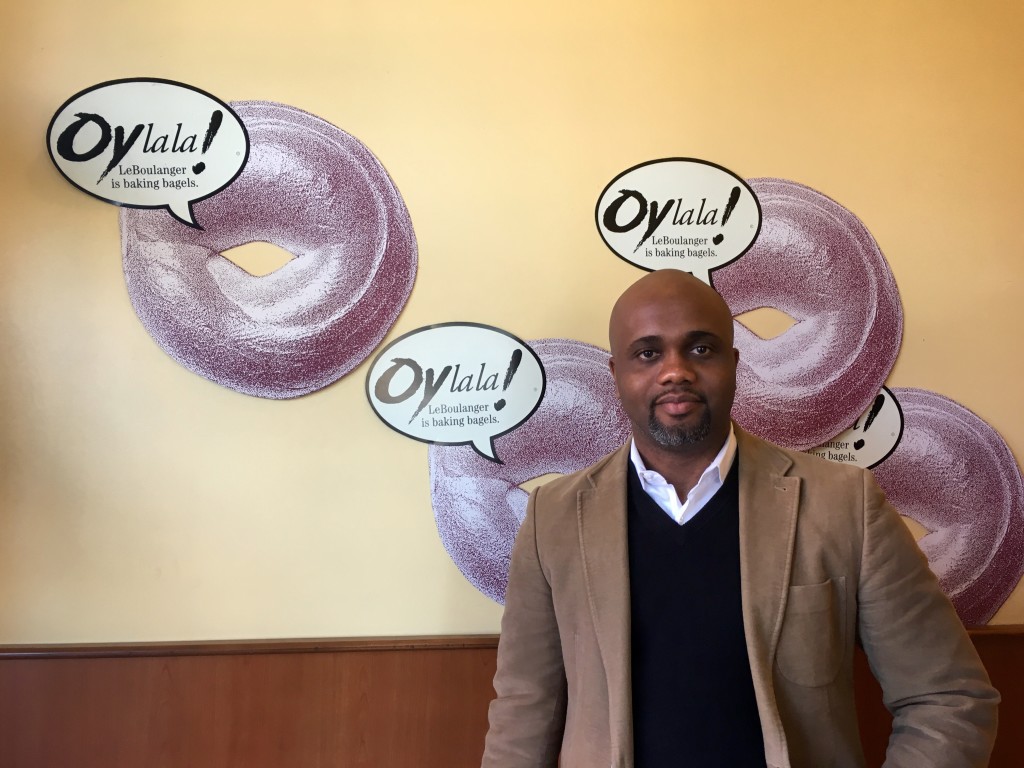 .
.
Nigerian, Stephen Ozoigbo knows all about being on the ground in Africa. He went back nine times last year. In 2013 he founded an African tech foundation where he’s helping bring the Silicon Valley entrepreneurial spirit, wisdom –and funding – to Africa. We met in a busy Silicon Valley café…
Ozoigbo: Africa has the youngest people on the planet…there are so many unemployed …you throw in all of the necessary elements to an active, aspirational population and what you’ll find is a big spark, a big explosion actually…of young entrepreneurs.
Like many Africans in Silicon Valley, Ozoigbo is patient person. He knows real change takes time.
Ozoigbo: It’s a marathon, not a sprint. Silicon Valley was not built in a day… Silicon Valley had to be welcoming to this new immigrant population…
Extras (that didn’t make the final cut)
On Forgiveness
“Holding on to a painful past doesn’t help. Grudges don’t help anybody. Forgiveness can connect a lot of things and gives you peaceful living,” Gabriel Tor was one of the Lost Boys of Sudan.
On Feeling Welcome in Silicon Valley
“100% yes. I’ve never felt out of place…In Virginia…every time I speak, people would say – where are you from? I get that question in Silicon Valley but it’s an honest question (not a loaded one) – to really understand where you are from, to appreciate the culture…In Silicon Valley people say: I LOVE your accent, where are you from? They have a curiosity to see my perspective.” Marie-Ange Eyoum, Senior Product Manager at Intel.
On Africa’s Future
“Africa’s future will be reinvented on the backbone of young tech savvy entrepreneurs. The Internet has flattened a lot of things. Information is democratized. ..that will shorten the marathon race. Africa has Gatorade now, we have better running shoes and we understand our aerodynamics and can do so much better on this race and not just stick to the legacy of race running,” Stephen Ozoigbo, founder of African Technology Foundation.
Find out more
Meet more “Tech Women” entrepreneurs from Africa (Fresh Dialogues report for the BBC). What did they learn from Silicon Valley?
Find out more about Immigration Reform here

Jan 29, 2016 | BBC World Service, Inspiring Women
By Alison van Diggelen, host of Fresh Dialogues
Why are women still struggling to reach parity in the Indian and Silicon Valley jobs market? Why is rock star economist Thomas Piketty predicting that revolution could be the great equalizer? And what explains the unexpected and dramatic rise in popularity of Bernie Sanders in the US election? All this and more was discussed last night on the BBC’s Business Matters.
I joined a lively discussion with BBC host Anu Anand who’s based in Delhi, and Jayati Ghosh, Professor of Economics at Jawaharlal Nehru University in Delhi. Listen to the podcast here (Jan 29, 2016)
Here are some highlights from our conversation, (starting at 20:43, edited for length and clarity):
Anu Anand: Alison, you’ve reported from Japan where there’s a real impetus to bring women into the workforce. Any lessons from there?
Alison van Diggelen: Prime Minister Abe has a goal of reaching 30% of women in positions of leadership by 2020. What he’s doing is mandating that large companies reveal their diversity statistics. Someone I interviewed there -Elizabeth Handover – called it a “shaming and blaming” strategy. In other words: release your figures and the shame upon you will incentive you to get more women into positions of power…But as in India, there is a big cultural pressure in Japan for women to stay at home, especially if they’ve had children.
Anu Anand: You’re in the heart of Silicon Valley. Would you say that women have achieved parity in the high tech workforce?
Alison van Diggelen: No, not at all. Women make up only 30% of these tech companies, and then tech jobs within that are only between 12% and 18%. We have a long way to go, but we’re moving in the right direction…
Justin Rowlatt: In India we see very rapid growth, an economy growing at 7%. In a society growing that quickly, surely inequality is less of an issue?
Thomas Piketty: Inequality is an even bigger problem in emerging countries. One important lesson from my historical study of inequality is that it took very big shocks, major shocks – World War I, Wold War II, the Great Depression, the Bolshevik Revolution for the Western elites to accept the kind of social, and fiscal reforms which brought a reduction in inequality and increased economic growth….
The big risk here in India like in other parts of the world, is that extreme inequality tends to lead to sometimes violence, some politicians to try to exploit…that’s why it’s so important to have more transparency about the complex relationship between caste and income and wealth; and address it through adequate reservation systems, adequate social policy…
Anu Anand: Let’s turn to Alison van Diggelen, host of Fresh Dialogues in San Francisco and Jayati Ghosh, Professor of Economics here in Delhi….Women are bearing the burden of growing inequality?
Jayati Ghosh: The proportion of women who get any kind of income from working (in India) is only about 2%. About 90% of women are working and they’re really engaged in unpaid work. Policies and processes don’t even bother to recognize this work so they don’t do anything to reduce it…for e.g. piped water, which would reduce the burden of going to fetch it. Piketty is right: India is one of the higher inequality countries in the world…the elite in India… holds on to most of the assets, grabs the natural resources, concentrates the wealth and shapes policies to make more of this…This leads to violence.
Anu Anand: Alison, inequality in the US has been growing too. It’s certainly a big point of debate at the moment, especially with the presidential candidates sparring with each other?
Alison van Diggelen: Absolutely, it’s a huge issue here. The inequality is the highest today since the 1930’s. The surprise popularity of Bernie Sanders – who has made inequality and poverty one of his number one issues – he calls it “The Great Moral Issue of our Time”…He came from nowhere – it’s to do with his message resonating that income inequality affects us all. A lot of people thought Hillary Clinton had the Democratic nomination in the bag. Sanders has really grasped on that and he’s riding on inequality and really giving Hillary Clinton a run for her money for this Democratic nomination.
Anu Anand: Do you see a world in which we’re not going to have to talk about inequality? Both india and America are very market driven economies?
Alison van Diggelen: I think inequality is rife here however, two studies in 2015 confirmed that people – both rich and poor alike – still believe in a brighter future. It may be misguided, but there is that aspirational idea and the class system in my experience – especially in Silicon Valley full of inspiring entrepreneurs – is less prevalent than I experienced growing up in Britain, where you’re encouraged to stay in the class you’re born. For example, when I was offered a place at Cambridge University, my father, a working-class union man from Glasgow asked me: what do you want to go there for? Aren’t the universities in Scotland good enough? There was that “stay in your place” attitude that I broke away from.
Check back soon for a report on online education and its potential to help close the income divide by increasing access to education and tech jobs.
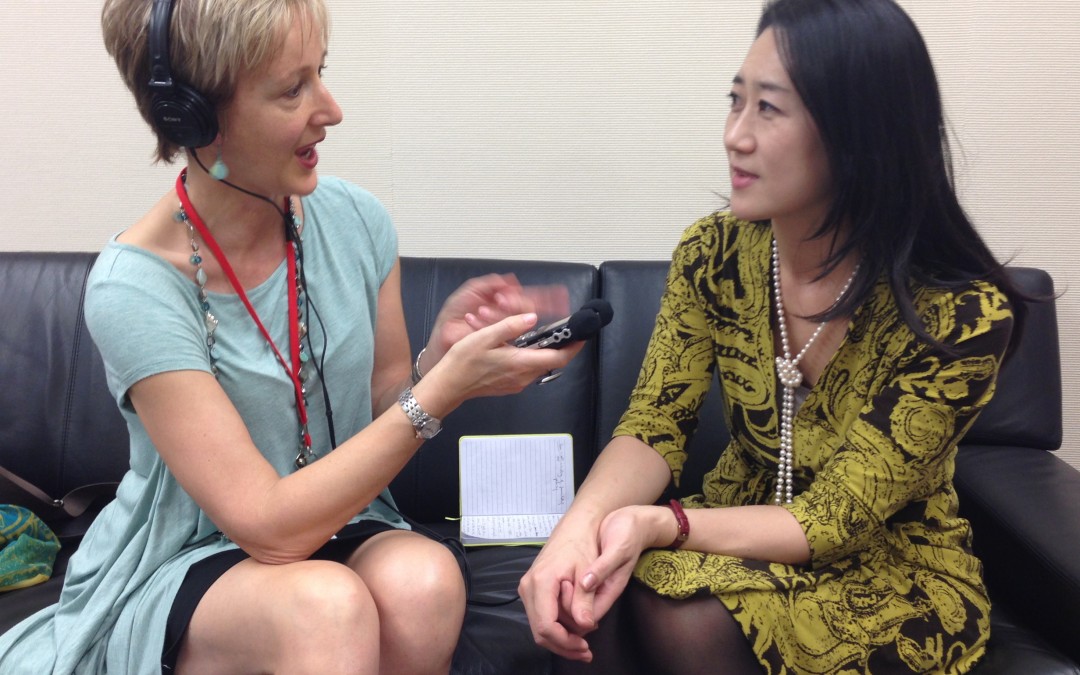
Dec 30, 2015 | BBC World Service, Education, Inspiring Women
By Alison van Diggelen, host of Fresh Dialogues
Japan is facing a double whammy: shrinking population and massive labor shortages. For some experts, the solution is simple: unleash the power of women.
Tonight on the BBC’s World Service, Jon Bithrey, host of Business Matters aired my report from Japan and we discussed the enormous challenges the country faces.
Prime Minister Abe’s government has been taking baby steps in Womenomics with some success, but in the longer term, what more needs done to change deeply entrenched cultural norms? In August, Japan’s government passed legislation mandating that Japanese companies with over 300 employees disclose their diversity statistics and goals in 2016. The Prime Minister’s ambitious target is for 30% of leadership positions in business and government to be filled by women by 2020.
What is Womenomics and why could it become a template for other Asian countries? I went to Tokyo to investigate for the BBC World Service…
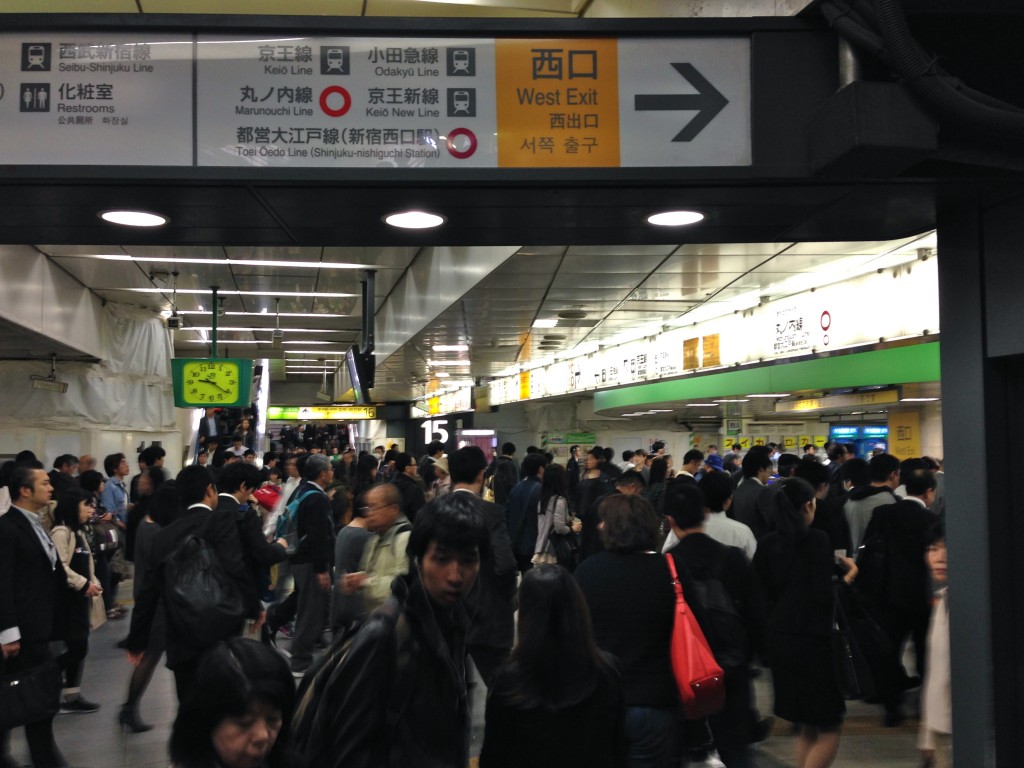 .
.
A version of this report aired on the BBC’s Business Matters on December 31, 2015. Listen to the BBC podcast here
Alison van Diggelen: I’m here in Tokyo to explore the promise of Womenomics, Prime Minister Abe’s plan to increase the country’s GDP by up to 15% by tapping its most underutilized resource. That is: Japanese women.
What exactly is Womenomics?
The term was coined by Kathy Matsui in a Goldman Sachs report outlining the economic potential of closing the gender gap. Japan faces a time bomb of a rapidly shrinking and ageing population; and a low female labor participation rate (although it has increased recently, many female workers work only part-time). This year, Prime Minister Abe, perhaps in desperation, is rebooting Womenomics and has set a 30% leadership goal for women in business and government.
[Atmos: Tokyo Metro announcements, doors closing, and passenger hubbub]
My first stop was the Gender Equality Bureau at the Ministry of Foreign Affairs. I asked Rui Matsukawa who’s Director of the Gender Mainstreaming Division: what’s the promise of Womenomics?
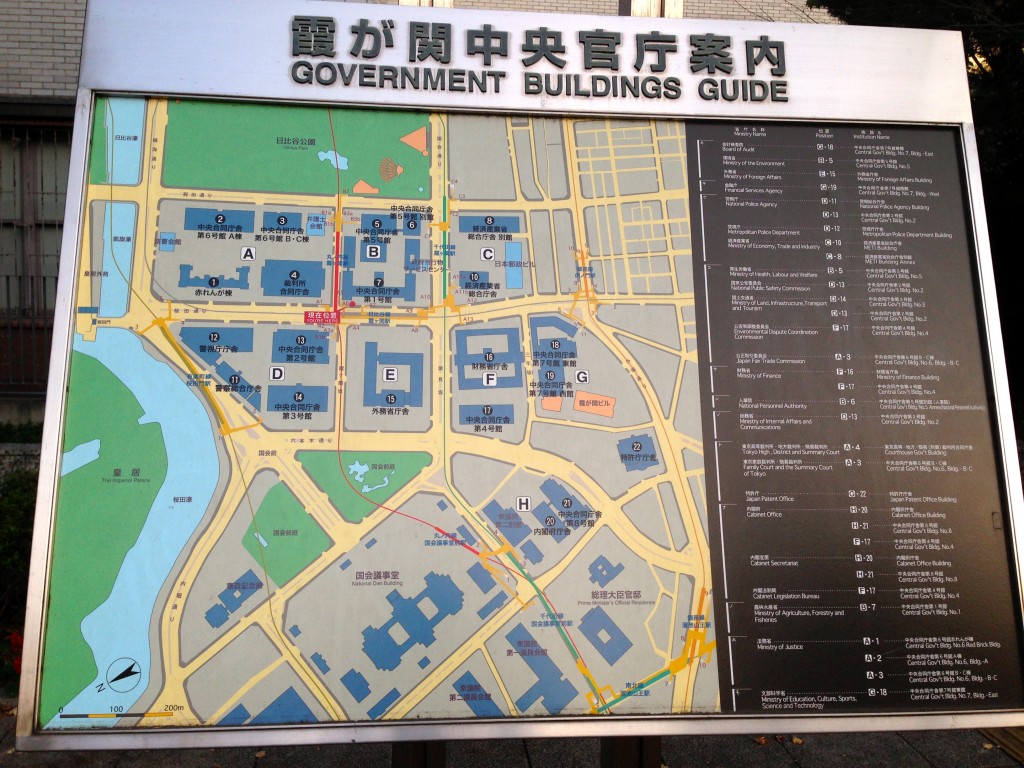
.
Rui Matsukawa: Womenomics’ essence is unleashing the talents of women in quality and quantity and make that help for the prosperous future of Japan. If Japan can change, that’ll be good prospects for the other countries. My conviction is: Japan will change is a very constructive way…where each individual is given the opportunity to fully express his or her own potential.
She points out that diversity is a great source of innovation.
And that’s one of Japan’s biggest challenges today.
Womenomics policy faces an uphill struggle: Japan’s cultural norms, and its male-centered, long and inflexible working hours.
I met with Elizabeth Handover, a Brit who’s lived in Japan for decades. She’s cofounder of the Women’s Leadership Development Center, in Tokyo.
Elizabeth Handover: Japan is struggling right now…some companies are still stuck in a Victorian hierarchy era…It’s that hierarchy that women get trapped in…
Alison van Diggelen: How do you think the PM’s goals will help?
Elizabeth Handover: One thing that’s really powerful in Japan is that companies don’t like to be “shamed and blamed”, so when the appalling statistics come out about how many female managers they’ve got, I think that’ll be a big influence for them to make changes.
I caught up with the former Governor of Hong Kong, Chris Patten and he shared a global perspective.
[Atmos: breakfast meeting audio]
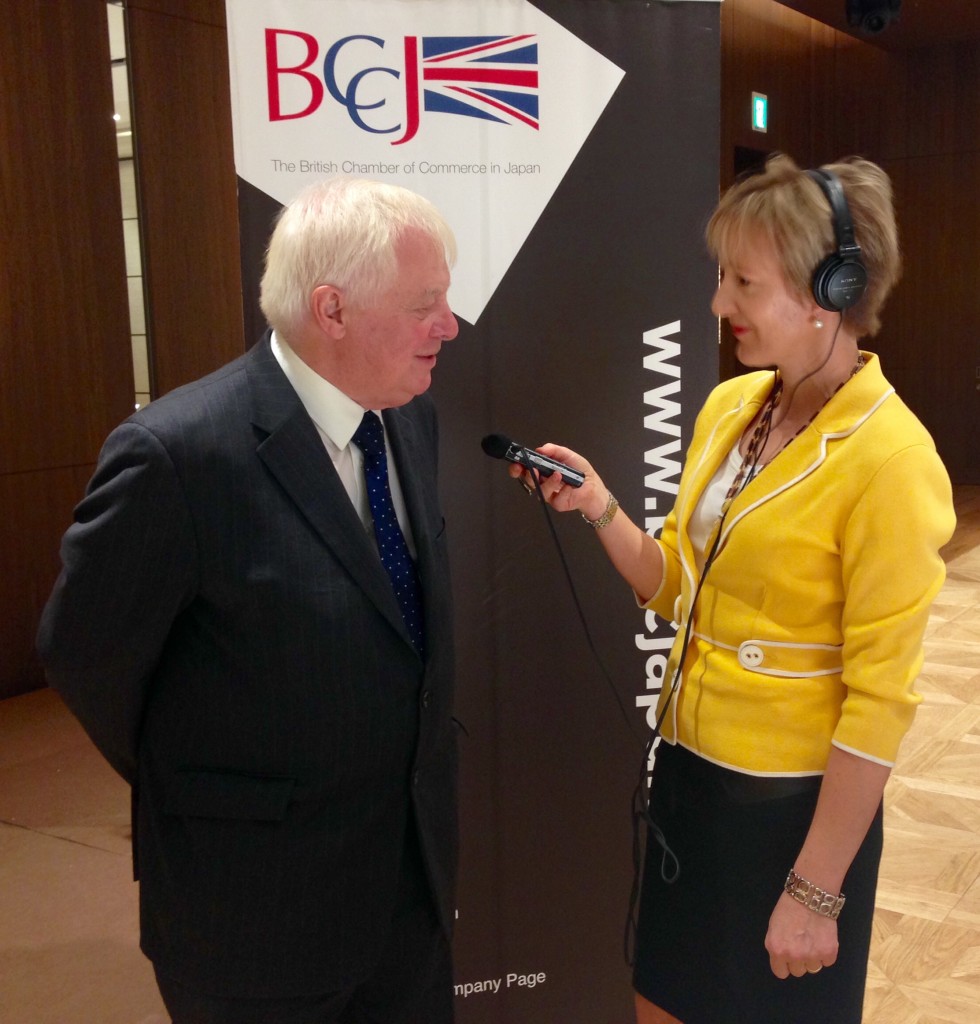 .
.
Chris Patten: I think it’s a very good idea that a PM should be so determined to increase the number of women in leadership positions. It’s not just a problem in Japan… I think it’s a big issue everywhere.
van Diggelen: What do you think is the PM’s greatest challenge? Do you think it’s a societal cultural shift that needs to happen?
Patten: Some of the changes that he has to cope with are common to other societies as well, but plainly, the main issue in Japan – as elsewhere – is the attitude of men.
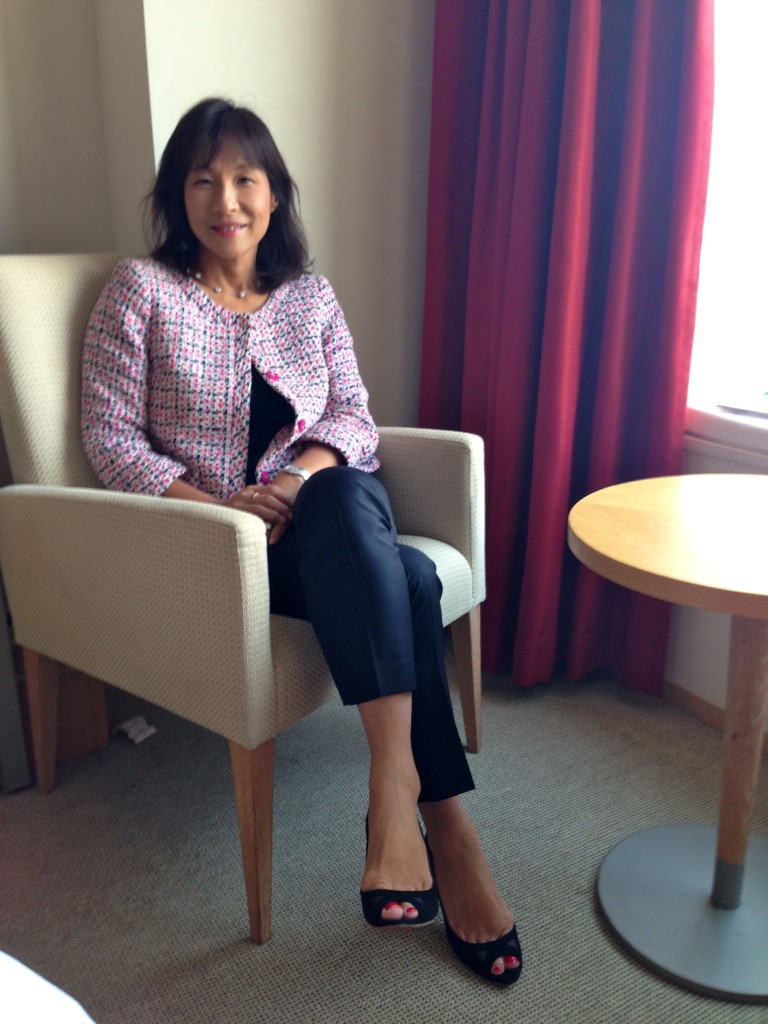 .
.
Yumiko Murakami is Head of the Tokyo Center of the Organization for Economic Cooperation and Development. She cites Akira Matsumoto, the CEO of Calbee, a Japanese snack company, as being a male champion of diversity. She’s hopeful that the mandated release of diversity stats will spur change.
Yumiko Marakami: Japanese society is very a homogeneous society…there is a very strong cultural pressure to follow the herd.
Murakami is concerned about shrinking population and is convinced that Japan’s policy will have global implications.
Yumiko Murakami: Japan is facing this humongous time bomb – companies don’t have enough people to hire, it’s really hurting the bottom line. China is going to face the same future…Korea is exactly the same thing. If we succeed in Japan today, maximizing the talent pool, other countries they are going to get good practice policy lessons.
But some female executives in Japan feel more could be done: like addressing the childcare shortage and changing the existing tax laws, which discourage married women working full time.
[Atmos: Tokyo Metro announcements, doors closing, hubbub]
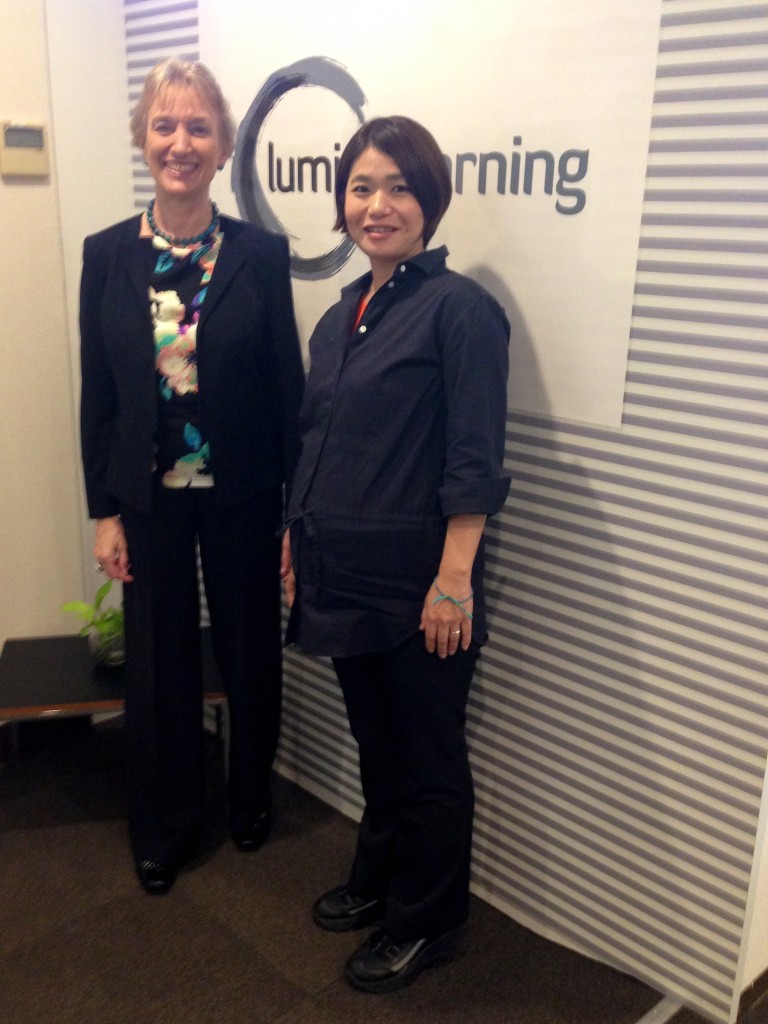 .
.
Before leaving Tokyo, I took the Metro to meet with Aya Usui, a senior consultant at Lumina Learning, a leadership training business. She’s expecting her third child and commutes 4 hours a day.
Alison van Diggelen: Are you encouraged by PM Abe’s commitment to Womenomics?
Aya Usui: To tell the truth…not really…
Alison van Diggelen: What would you like to see him do?
Aya Usui: I’d ask him to invest more money and time to develop female leadership because many females have a lot of talent and a lot of potential, but they’re not used enough…they’re killing their possibility…If we can achieve full potential it’s really a wonderful world this world becomes…
That’s the promise of Womenomics: a wonderful world where everyone achieves their full potential. The world will be watching in 2016 to see if Prime Minister Abe’s shaming and blaming will work.
***
To learn more about Womenomics and gender equality, listen to the BBC Business Matters Last Podcast of 2015 and check out the Fresh Dialogues Inspiring Women Series.
Many thanks to Elizabeth Handover of Lumina Learning and fellow Scot, Lori Henderson and her team at the British Chamber of Commerce for helping facilitate the interviews in Tokyo.

Nov 23, 2015 | BBC World Service, Entrepreneurship, Entrepreneurship & Innovation, Social Entrepreneurs
By Alison van Diggelen, host of Fresh Dialogues
Last Thursday, I joined a special BBC World Service program hosted by Fergus Nicoll in Ho Chi Minh City, Vietnam. We began by discussing the large community of Vietnamese in Silicon Valley and its connection to Vietnam’s growing tech hub. Listen to the BBC podcast (at 21:00 re. Silicon Valley-Vietnam, and at 31:00 re. The Tech Awards)
We discussed my latest interviews in Silicon Valley on the BBC Business Matters program. Here’s a transcript of our dialogue, edited for length and clarity:
Fergus Nicoll: Alison, you’ve been talking to some of the winners of the Tech Awards in Silicon Valley. What kinds of things are they coming up with and what could Vietnamese developers seek to emulate?
Alison van Diggelen: I spoke with three young entrepreneurs who’re doing incredible things: Tricia Compas-Markman is founder of DayOne Response. What they’ve built is a 10 liter backpack – it’s very low-tech in fact. It provides clean drinking water on day one in a natural disaster. They’ve deployed it in places like Nepal after the earthquake; and what they want to do is pre-position it in places like the Philippines that are subject to natural disasters. It’s a wonderful way for families and individuals to collect and treat and get clean drinking water in disaster areas…
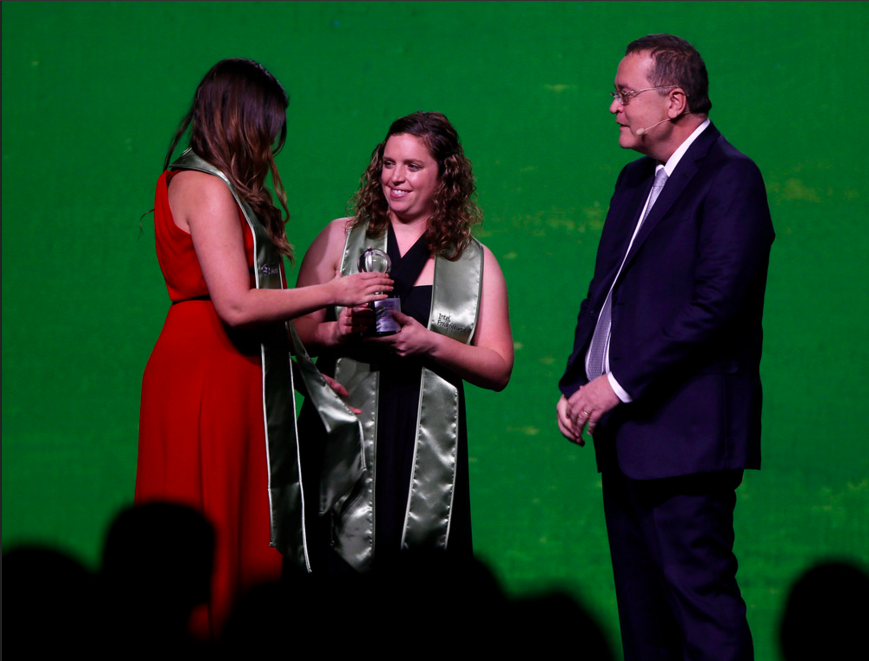 .
.
Fergus Nicoll: We were in the Philippines last week…we could maybe put them in touch with Senator Loren Legarda or the Red Cross in the Philippines? They would be very keen to hear about that kind of initiative. What else have you been hearing about?
Alison van Diggelen: Let’s do that for sure! The other winner is called Open Pediatrics and it’s an online community for pediatricians. It’s almost like a Khan Academy for pediatricians: an online learning community connecting the cutting edge technology of first rate hospitals like Boston’s Children’s Hospital with rural clinics in developing countries, so they get the same expertise. It’s a wonderful, simple idea and there are some top people involved in that. I talked with Traci Wolbrink, one of the key people (pictured at the podium, above).
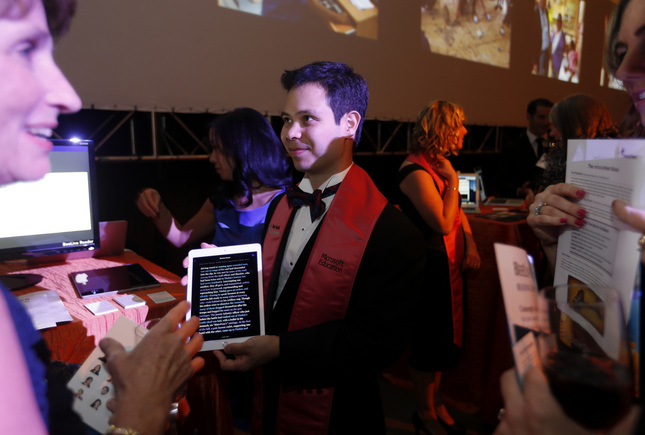 And the last one I want to mention is a very simple app…It’s called BeeLine Reader, founded by Nick Lum, a corporate lawyer who’s become a tech humanitarian. This BeeLine Reader allows people to read on screens much more easily. If you’re suffering from dyslexia, or vision problems, you can read using a color gradient. So if you can imagine reading a line, and the color of the script changes from blue to red to black but it wraps around, it guides your eye so you can read faster or more clearly. This is available for either a dollar a month or $5 to buy the app.
And the last one I want to mention is a very simple app…It’s called BeeLine Reader, founded by Nick Lum, a corporate lawyer who’s become a tech humanitarian. This BeeLine Reader allows people to read on screens much more easily. If you’re suffering from dyslexia, or vision problems, you can read using a color gradient. So if you can imagine reading a line, and the color of the script changes from blue to red to black but it wraps around, it guides your eye so you can read faster or more clearly. This is available for either a dollar a month or $5 to buy the app.
There’s wonderful creativity going on…
Fergus Nicoll: Absolutely…
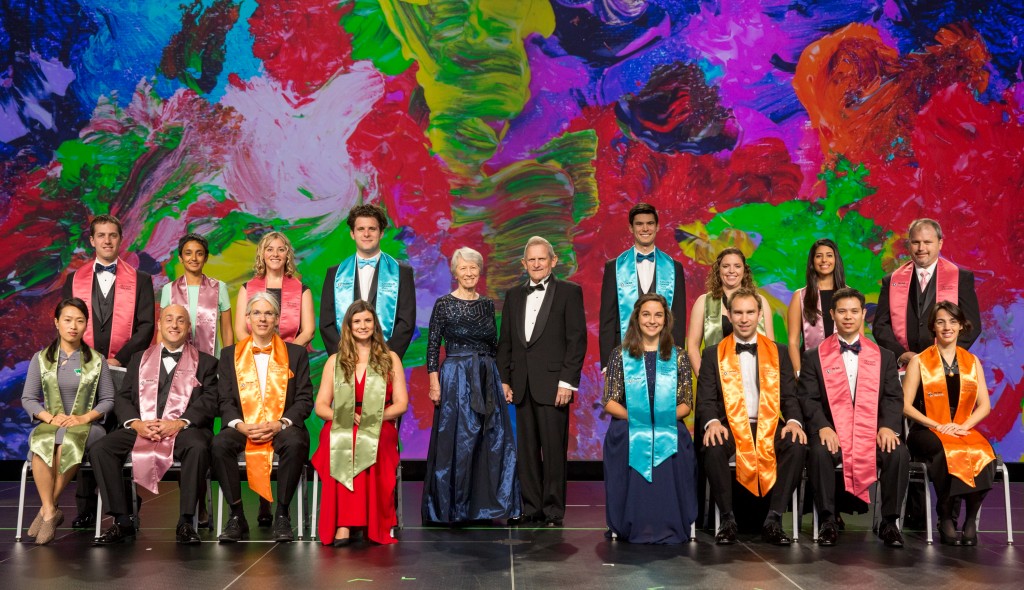
The Tech Awards in San Jose on Thursday November 12, 2015. (© Photo by Jakub Mosur)
Alison van Diggelen: All these entrepreneurs were given a good load of money to take it to the next level. It was very inspiring to see that not all techies are out to make a buck. Some of them want to change the world…make the world a better place.
Fergus Nicoll: Brilliant. That sounds fantastic.
Find out more at Fresh Dialogues
What is Tech Award winner Jeff Skoll doing to change the world and make it greener?
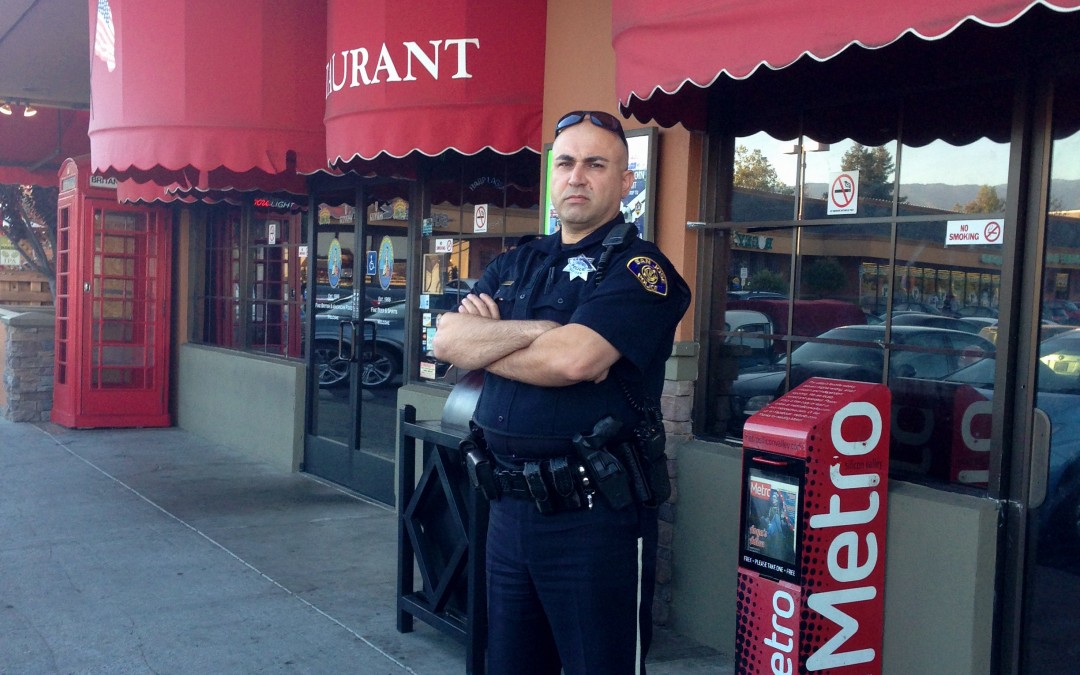
Nov 11, 2015 | BBC World Service, Entrepreneurship, Policy
By Alison van Diggelen, host of Fresh Dialogues
If you’re a techie in Silicon Valley today, chances are you have a six figure salary and a pretty comfortable living situation. But what if you don’t work in tech? What’s it like being in Silicon Valley when you have to struggle to make ends meet and you see twenty-year-olds with million dollar mansions?
Zoe Kleinman, a presenter for the BBC’s Business Daily asked me to explore the “underbelly of Silicon Valley” for the BBC World Service. I found some some people who experience the underbelly of glamorous Silicon Valley every day, and others deeply resentful at being forced to leave the “Valley of Heart’s Delight.”
“I resent the people that got lucky and got to just go to college, get a job, buy a house, be rich instantly and by the time they’re 30, they’re super rich.” Radel Swank (school teacher)
You can listen to my report at BBC Business Daily (starts at 11:00 in the BBC podcast). The program aired on November 3rd, 2015 on the BBC World Service and San Francisco’s public radio station, KALW.
“When I first moved out here 23 years ago, if I’d’a bought a place then at $140,000 I would’a sold that place and been long gone. I’d’a been on Easy Street…” Bruce (lives in a Silicon Valley trailer)
Here’s an edited transcript of the program and report (plus some bonus material from the most articulate cop I’ve ever met).
Zoe Kleinman: We gave Silicon Valley journalist, Alison van Diggelen the difficult assignment of popping out for a drink in the local bar, to find some people not in the tech sector…Some less than enthused residents of Silicon Valley…
Sounds of Britannia Arms Bar, San Jose (includes bar hubbub and cursing when beer is spilled on a precious iPhone by a tech worker )
Alison van Diggelen: I’m here at a popular watering hole in SV to explore the economic and social impact of the tech boom on the local community. It’s a tale of two communities: the haves and the have-nots; the techies and the non-techies. When I speak to people working in tech, they have no complaints. Life is good. Biz is growing, and there’s plenty of money flowing. Yet for those not in tech, like teachers, police officers and the service industry, life in Silicon Valley is not so rosy, especially if they can’t afford to buy a house.
Home ownership is the great divider in SV. With house prices growing to an average of $1M this year, most homeowners are sitting pretty with a healthy nest egg for retirement. Those forced to rent are feeling the pinch.
Here’s Bruce, a longhaired Grateful Dead fan, who lives in a trailer in San Jose. He works in the sports industry.
Bruce: I live in a trailer, it’s pretty cheap. Costs me about $2200 a month.
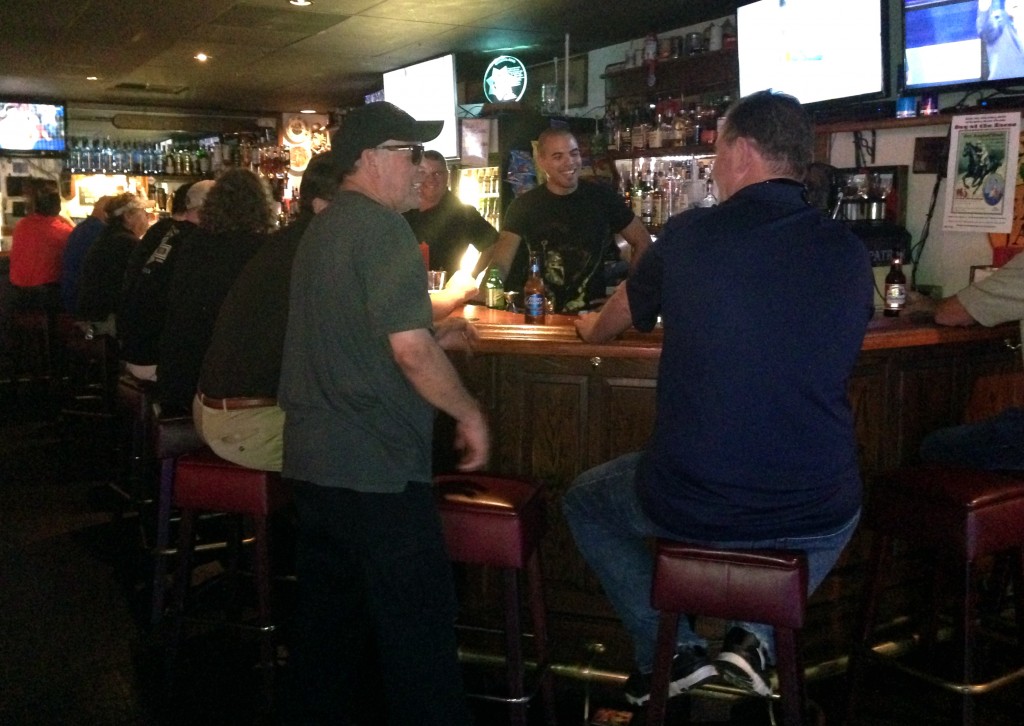 van Diggelen: That a lot for a trailer, is it not?
van Diggelen: That a lot for a trailer, is it not?
Bruce: Yeah, but I heard there was a trailer in the Hamptons that sold for a million dollars…so I thought that was a pretty good deal.
van Diggelen: So tell me: why do you live in a trailer here?
Bruce: Cos it’s the only thing I could afford. When I moved out here in ’93 I shoulda bought a place…. By the time I decided I was gonna stay it’d went through the roof. I couldn’t afford it, so I just rented. Anything that we woulda wanted woulda been about $650… $700,000. It woulda been $5000 a month, so we bought a nice little frickin’ trailer in an over 55 (years) area. Works great for me.
When I first moved out here 23 years ago, if I’da bought a place then at $140,000 I woulda sold that place and been long gone. I’da been on Easy Street…
van Diggelen : For others like Radel Swank, a teacher in her 50s who recently lost her job and her home and plans to leave SV for good, life is a daily struggle.
Radel Swank: If you’re one of the lucky people and you’re in the tech groove, everything’s great. You’re making great money, you’re riding the wave. It’s great. But if you’re not in the tech groove and you’re a teacher or a waitress, you’re unlucky. I resent the people that got lucky and got to just go to college, get a job, buy a house, be rich instantly and by the time they’re 30, they’re super rich. I feel like luck is part of it.
Right now I’m renting a room in a house… It’s just weird after having my own place and my own space for 10 years, to be in a little room, sharing a bathroom with some guy I just met yesterday.
Alison van Diggelen: Does part of you wish you were in the tech community, ride the tech wave?
Swank: I am a little envious. My roommate, the one who owns the house. She obviously has an awesome job (in tech) because she owns a beautiful house and she’s in her 20s. I’m a little resentful and envious that she is that young and that successful. When I was that age, I was waitressing and working my way through college. How do some people get so lucky?
Anyone who’s not in this tech environment can’t afford to live here any more. SF rents are like $2500 for a studio. You can’t live on $15 an hour and pay that kind of rent. It’s out of line with reality…a lot of people who’ve been in SF a long time are being pushed out…unless you bought your home 30 years ago, then you’re OK.
If you’re someone like me in the middle you can’t make it here…I’m really in a pickle.
van Diggelen: With SV rental rates averaging $2300 a month and growing faster than average incomes, it’s putting a squeeze on many residents in SV.
Even those with a steady job are feeling the pinch. I spoke to Officer Nabil Haidar who’s been with the SV police force for almost 20 years and has witnessed the seedy underbelly of “glamorous SV.” Even inside million dollar mansions, he’s seen real suffering. For some, Spam Valley might be a more apt description of Silicon Valley.
Officer Haidar: When I started 19 years ago, we didn’t have the homeless population that we have now…because everything is getting more expensive and the economic situation is pushing people onto the streets.
van Diggelen:So they’re getting priced out of the housing market?
Officer Haidar: Priced out of everything…Me? There’s no way I can afford to buy a house with my salary…we make good money but it’s not enough. You’re talking about small apt going for $2500 a month, or small condominium going for six, $700,000. That’s ridiculous.
Everything is going up, homes prices are through the roof, rents is ridiculous, even food. Everything is expensive.
van Diggelen: Officer Haidar is concerned about the disconnect between the haves and have-nots in SV.
Officer Haidar: I see the poor and I see the rich. I go to (emergency) calls…rich people getting involved in domestic violence and I go to poor people who cannot even afford to eat. So I see it all.
van Diggelen: What do you think would wake up the tech community to the plight of people less fortunate? They’re so focused on the next tech gadget.
Officer Haidar: They need to go out on the street and start walking around and opening their eyes and seeing the homeless. I’m here in SJ…I talk to people on the west side, they’ve never been to the east side. They have no reason to be on the east side, but that’s where the poor, the hardworking, the blue collar people live there. If they just had the time to drive down on the east side and see really what’s happening, maybe that would be a wake up call for them… I hope that my interview will wake up some people.
There is disconnect between the rich and the poor and from my experience, as law enforcement, I realize that 80% of the problem going on in SJ has to do with financial. A lot of people they went and they bought homes…all their money going into the homes and they cannot really afford it.
Some people, they work two jobs, even three jobs.
Alison van Diggelen: And in their efforts to keep up with their neighbors and their million dollar mortgages, the impact of the tech boom on families can be fatal.
Officer Haidar: You get drugs, domestic violence, people get depressed. The peer pressure. People want to catch up to the Joneses. And then they stretch themselves too much and realize they’re over their heads with bills and money. Then they go to things against the law: fraud, theft…it’s all like domino effect. When you are desperate, people do desperate things.
People get depressed, suicide. People get ashamed that what they did. Some people use drugs to cope, some people are in denial. That’s SV: there are so many things behind the scenes no one knows. As a police officer, I’ve seen it. I’ve dealt with it.
van Diggelen: You feel some in SV are neglecting their families, their kids to make the big bucks, to make the big mortgage?
Officer Haidar: Of course. I see it all the time. They’re just catching up to the Joneses, but the problem is, they don’t know that the Joneses are also having a problem. It’s very sad story. They want to pay that million regardless of what expense.
***
Here’s Rachel Massaro, a senior researcher at Joint Venture Silicon Valley, a local nonprofit. (Interview took place in July 2015)
Massaro: 40% of SV renters are technically burdened by housing costs. Which means they spend more than 35% of their gross income in housing. And because of that, they’re really struggling. One third of our young adults 18-34 are living with a parent and 10% of SV residents are living in poverty.
If you look at all households in SV, about a third of them are not self sufficient, which means that they rely on public or private informal assistance, like living with a friend or a family member, free babysitting, food from food banks, other services from churches and others.
Housing prices are high…in some places (in SV) homes are selling for 200% of more than the national average, rental rates are as high as 185% of the national average, but also the cost of goods and services is higher here by about 6%
The top 5% earning households in SV make over 400,000 (dollars) more than the bottom 20%….Income does include stock options and interest on investments.
The top 5% of households in SV make more than 31 times the income of the bottom 20%.
Find out more about the less glamorous side of Silicon Valley from Joint Venture Silicon Valley’s latest report on Income Inequality
Check out the KQED Radio Sereis “Boom Town” featuring reports by Rachael Myrow and her colleagues
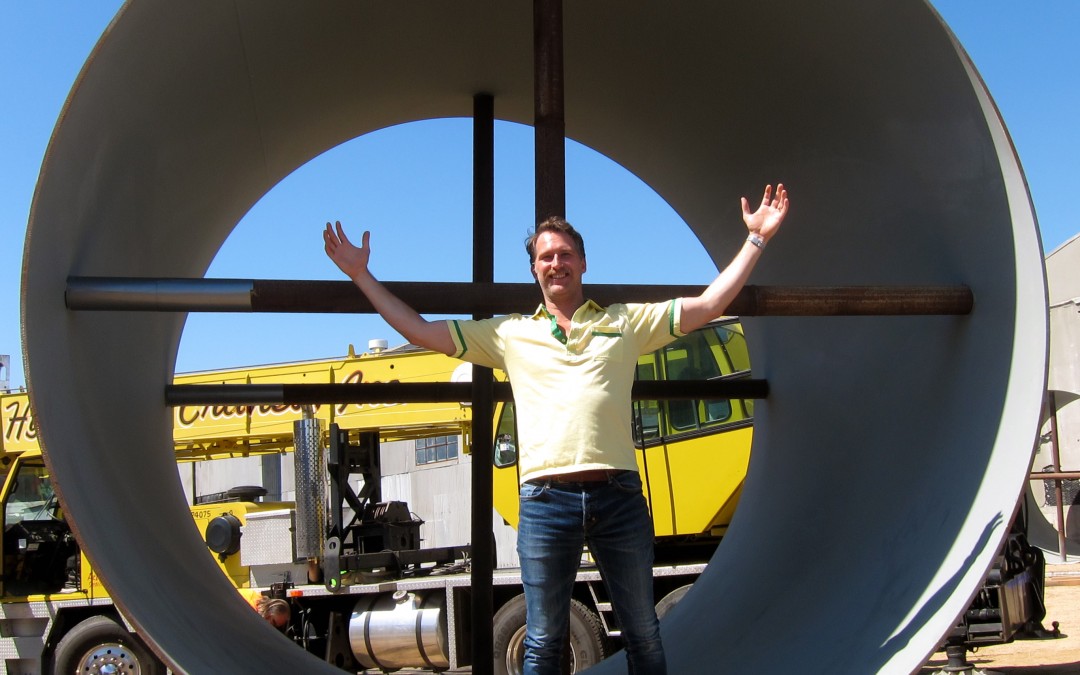
Oct 29, 2015 | BBC World Service, Entrepreneurship & Innovation
By Alison van Diggelen, host of Fresh Dialogues
Ever since Elon Musk released a white paper outlining the sci-fi Hyperloop, excitement among the tech community has been immense. This futurist ultra-high speed form of transport has inspired hundreds of university teams and two fiercely competitive LA companies: Hyperloop Technologies, and Hyperloop Transportation Technologies (HTT). I went to LA to find out what progress has been made.
HTT’s CEO, Dirk Ahlborn wasn’t ready to open the doors to the HTT studio to reveal the sights and sounds of progress. He and his small team were only available for phone interviews. One of his crew told me that all I could record, anyway, was the sound of fingers on keyboards at this point. A crowdsourcing experiment harnessing a reported 400 part-time global contributors, the HTT effort has produced some fancy looking Hyperloop station and capsule scale models, but the hard engineering appears to be happening only at Hyperloop Technologies. It was there I arrived September 16th with my trusty audio recorder to capture the sound of the Hyperloop potentially becoming a reality.
Here’s my latest assignment for the BBC World Service. Listen to the BBC podcast (Hyperloop starts at 14:00) and find out more here. The report is due to air this evening on BBC Business Matters 6pm PST (1 am GMT, Friday Oct 30th)
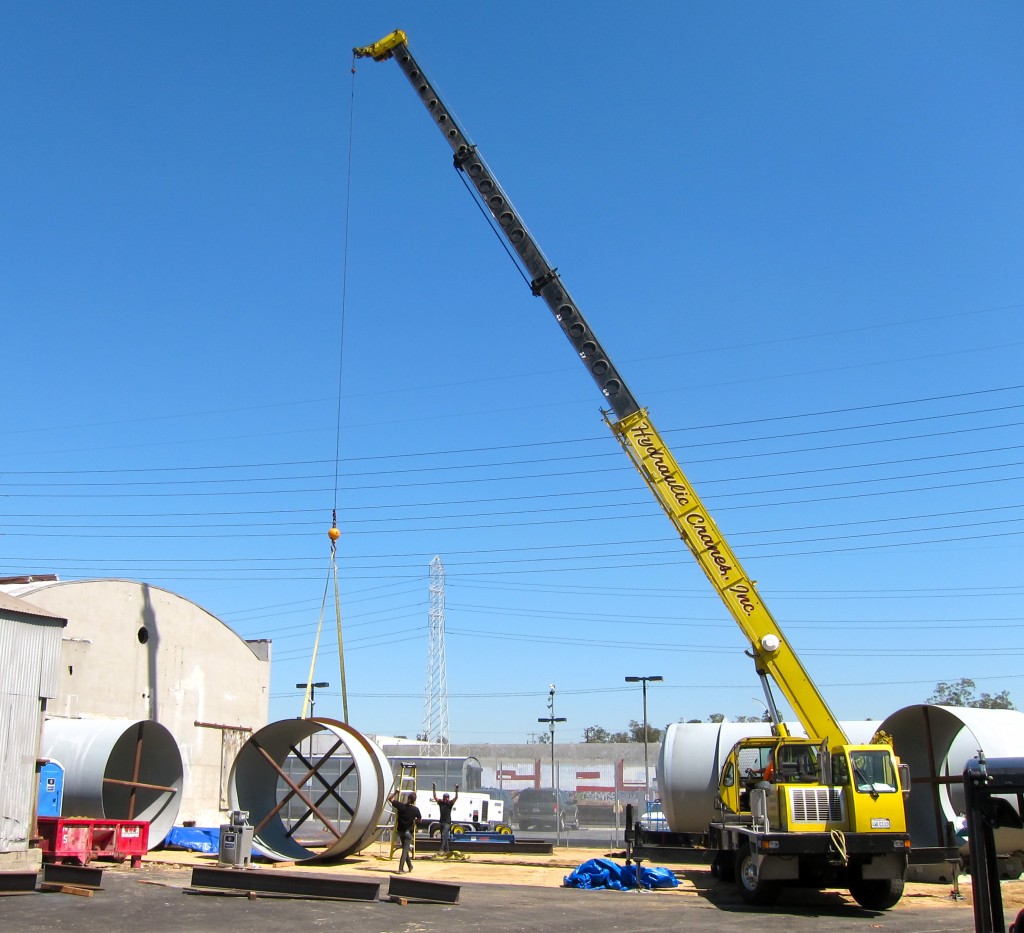 I’m at the Hyperloop Technologies Headquarters in downtown LA to find out if this sci-fi project is for real. In 2013 Tesla’s Elon Musk published a white paper, describing what he called a “5th Mode of Transport.” He describes it like:
I’m at the Hyperloop Technologies Headquarters in downtown LA to find out if this sci-fi project is for real. In 2013 Tesla’s Elon Musk published a white paper, describing what he called a “5th Mode of Transport.” He describes it like:
“A cross between a concorde and a railgun and an air hockey table.” Elon Musk
A “hyperloop” comprises passenger or freight pods that are shot down a near-vacuum tube from one city to another, at over 700mph.
The prospect of traveling on land between SF and LA in 30 minutes has some people salivating, and skeptics shaking their heads in disbelief.
Hyperloop Technologies’ CTO, Brogan BamBrogan explains:
“Elon absolutely inspired us…his fingerprints are all over this. The system architecture that Elon came up with is what inspired this whole team to get together and go after this bold project.” BamBrogan
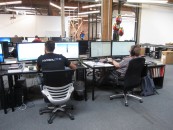 BamBrogan and his cofounder, Shervin Pishevar, have assembled over $10M in funding, and a 50-strong team of expert engineers. They’re creating what they call an “energy elegant” transport solution, with a potential freight market of 150 Trillion dollars over the next 20 years.
BamBrogan and his cofounder, Shervin Pishevar, have assembled over $10M in funding, and a 50-strong team of expert engineers. They’re creating what they call an “energy elegant” transport solution, with a potential freight market of 150 Trillion dollars over the next 20 years.
Here’s venture capitalist, Pishevar:
“The idea itself can have a deeply transformative effect on our planet, and on our lives. It brings the world closer together. Think about the impact of the Wright Brothers’ invention of flight, and their Kitty Hawk moment, what a pivotal moment that was.” Pishevar
Hyperbole for the Hyperloop? Maybe. But like Elon Musk, Pishevar has a record of proving naysayers wrong.
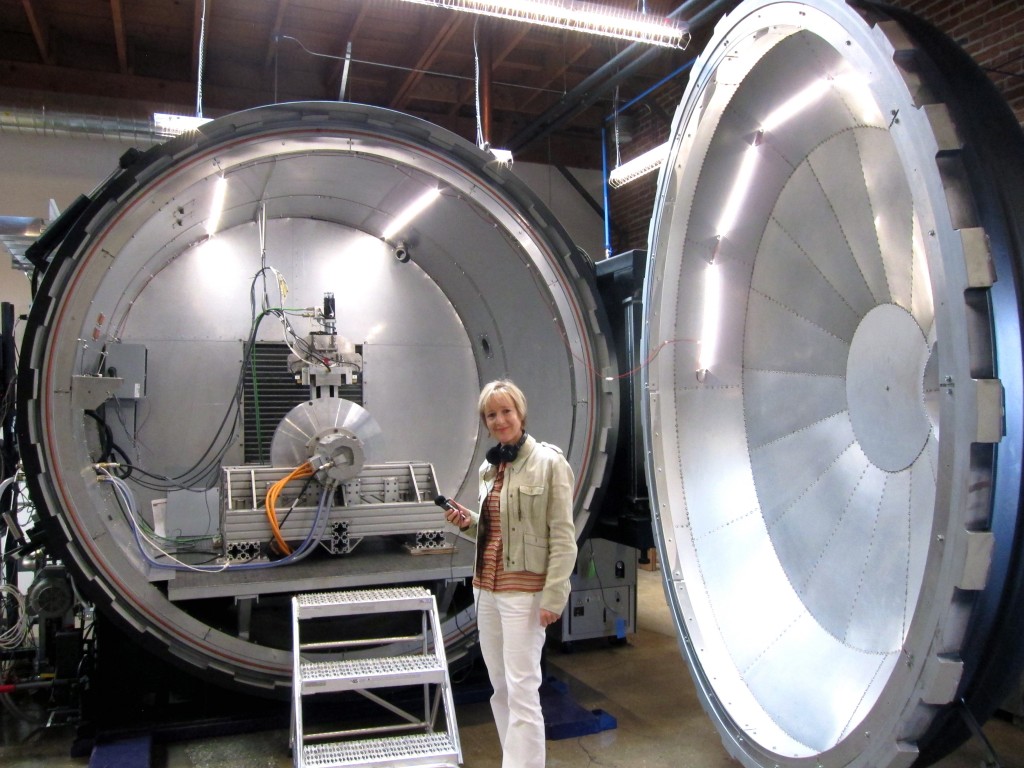 Hyperloop’s test engineer Cassandra Mercury explains:
Hyperloop’s test engineer Cassandra Mercury explains:
Ambi – atmos of air whooshing, rotor spinning.
Cassandra Mercury: We have this rotor moving….running at 10,000 rpm, it’s a linear speed of about 750 miles an hour. We’re testing the levitation possibilities at the speed we’d be using on the actual hyperloop.
van Diggelen: Elon Musk described it as like an air hockey table. Is that accurate?
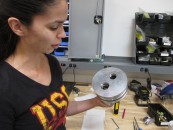 Mercury: That’s a really good analogy. It’s just some air and a light gap between the air bearing and the track.
Mercury: That’s a really good analogy. It’s just some air and a light gap between the air bearing and the track.
van Diggelen: So the idea is: the pods of people and freight will levitate like a puck on an air hockey table?
Mercury: Exactly!
The team is targeting global freight as well as passenger transport. Numerous opportunities exist to connect high-traffic city pairs like LA and SF, that are less than 900 miles apart.
Here’s Hyperloop Technologies’ Director of Operations, Erin Kearns:
“We definitely see the benefits of transporting cargo…ports being too small…ships are sitting offshore 5 miles…we want to streamline the process, make it a lot more elegant, a lot cleaner for the environment.” Erin Kearns
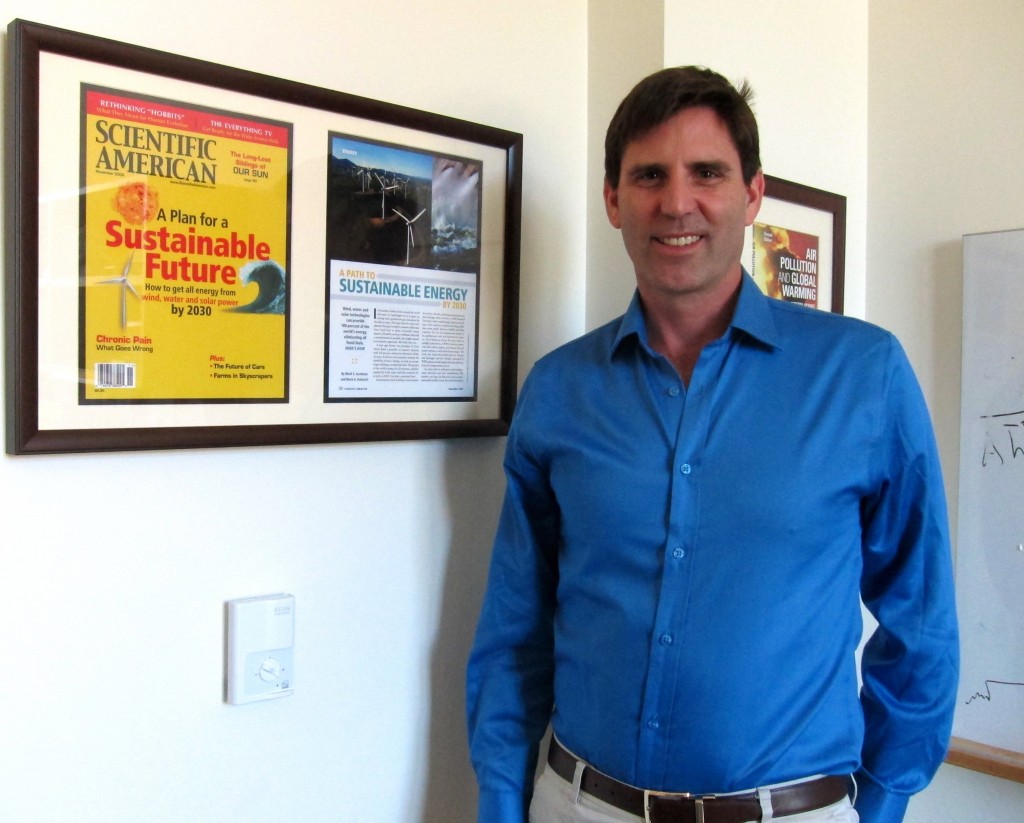 I ask Mark Jacobson: what could derail the Hyperloop? He’s a professor of civil and environmental engineering at Stanford University.
I ask Mark Jacobson: what could derail the Hyperloop? He’s a professor of civil and environmental engineering at Stanford University.
He starts with comparisons to California’s High Speed Rail project, which has already broken ground…
Jacobson: I’m sure the Hyperloop is much more expensive… Like any large construction project, issues of zoning, trying to get rights of way… There’s always going to be a political fight for trying to site something like this…
And then he lists the technical challenges…heat build up, leakage from the vacuum tube, keeping a uniform distance between the pods and the tube.
“You’re gliding along at 700 mph and hit the bottom of the tube…I wouldn’t want to be the first person to ride in the train!” Jacobson
BamBrogan has this response to naysayers:
Brogan: I say: Wait a year, we’ll have a working prototype.
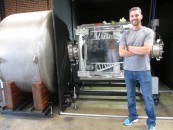 I ask him how they’re going to avoid the political nightmares that’ve slowed California’s high speed rail. Brogan smiles and says they’ll route their LA to SF hyperloop in the ocean.
I ask him how they’re going to avoid the political nightmares that’ve slowed California’s high speed rail. Brogan smiles and says they’ll route their LA to SF hyperloop in the ocean.
BamBrogan is channeling Elon Musk in driving his Hyperloop team forward and he’s bullish about securing $80M more in venture capital, and overseas commercial contracts very soon.
“The team is trying to operate on a timescale that is of Elon Musk ilk…By 2017/18, we’ll have shovels in the ground in a couple of locations,” BamBrogan
Meanwhile, rival company Hyperloop Transportation Technologies (or HTT) boasts it will start work on a 5-mile demo track in California next year. Despite partnerships with UCLA and key industry partners; this rival team of 400 –mostly part timers – is not yet funded.
Back with BamBrogan’s team, they’re hiring aggressively.
“We’re aiming for the end of 2016 to have our Kitty Hawk moment: a full scale, full speed system that’s operating,” Bambrogan
Coming soon at Fresh Dialogues: an interview with HTT’s Dirk Ahlborn. Why does he insist that crowdsourcing the Hyperloop is the better approach?


 .
.


 .
.
 .
. .
. .
.
 .
. And the last one I want to mention is a very simple app…It’s called
And the last one I want to mention is a very simple app…It’s called 

 van Diggelen: That a lot for a trailer, is it not?
van Diggelen: That a lot for a trailer, is it not?
 I’m at the
I’m at the  BamBrogan and his cofounder, Shervin Pishevar, have assembled over $10M in funding, and a 50-strong team of expert engineers. They’re creating what they call an “energy elegant” transport solution, with a potential freight market of 150 Trillion dollars over the next 20 years.
BamBrogan and his cofounder, Shervin Pishevar, have assembled over $10M in funding, and a 50-strong team of expert engineers. They’re creating what they call an “energy elegant” transport solution, with a potential freight market of 150 Trillion dollars over the next 20 years.  Hyperloop’s test engineer Cassandra Mercury explains:
Hyperloop’s test engineer Cassandra Mercury explains: Mercury: That’s a really good analogy. It’s just some air and a light gap between the air bearing and the track.
Mercury: That’s a really good analogy. It’s just some air and a light gap between the air bearing and the track. I ask Mark Jacobson: what could derail the Hyperloop? He’s a professor of civil and environmental engineering at Stanford University.
I ask Mark Jacobson: what could derail the Hyperloop? He’s a professor of civil and environmental engineering at Stanford University. I ask him how they’re going to avoid the political nightmares that’ve slowed California’s high speed rail. Brogan smiles and says they’ll route their LA to SF hyperloop in the ocean.
I ask him how they’re going to avoid the political nightmares that’ve slowed California’s high speed rail. Brogan smiles and says they’ll route their LA to SF hyperloop in the ocean.

